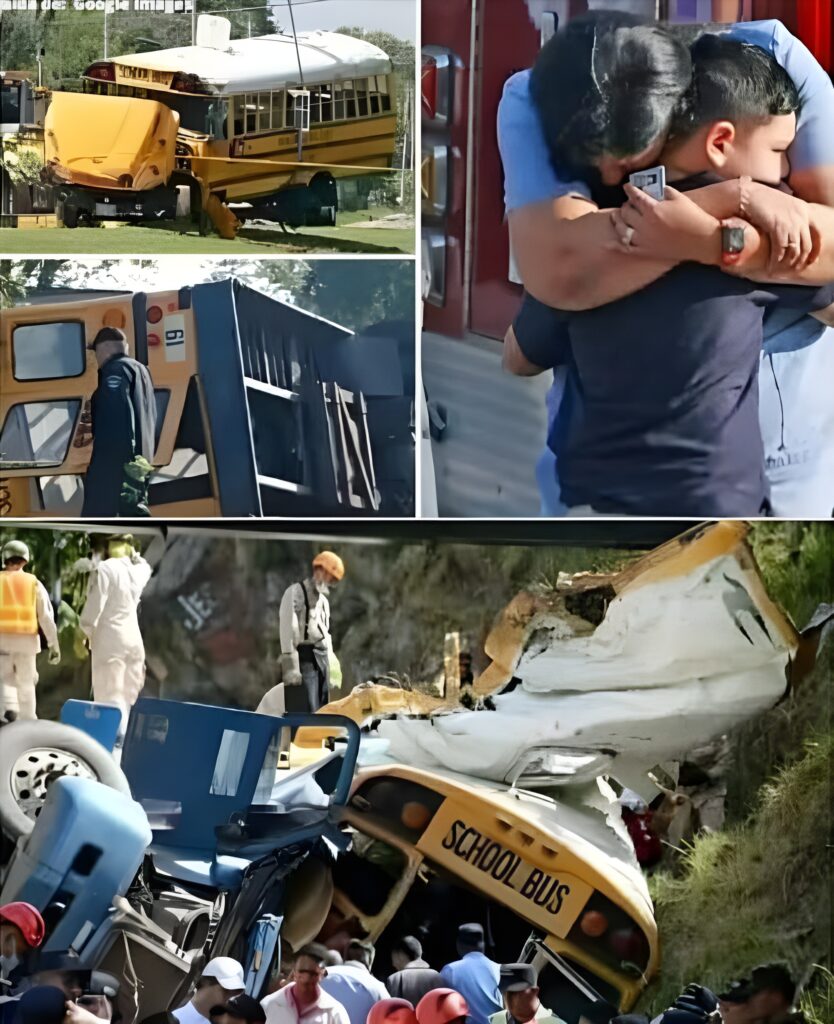
The Headline That Broke Millions of Hearts
It started with a single shocking headline splashed across social media feeds:
“School Bus Accident Leaves 32 Children Dead — A Nation in Mourning.”
Within hours, the internet was flooded with grief. People shared the story, offered prayers, and mourned children they believed had lost their lives far too soon.
But as the facts were checked, the heartbreak took a different turn. No local reports. No official statements. No witnesses. Not even a location. The story, it turned out, wasn’t a tragedy — it was a fabrication.
The Anatomy of a Viral Lie
Despite the lack of proof, the story spread like wildfire. Photos of overturned buses — many from unrelated accidents years ago — were recycled to make the claim look real.
The result? A tidal wave of outrage and sorrow built on pure fiction.
It was another reminder of a modern truth: the internet rewards emotion, not accuracy.
Fake stories crafted to shock and sadden often go viral faster than facts ever can.
Why We Believe Lies That Break Our Hearts
Stories about children and schools hit us where we’re most vulnerable. They stir empathy, fear, and grief — emotions that override skepticism.
When we see headlines claiming dozens of young lives lost, our first instinct isn’t to question — it’s to feel.
And that’s exactly what misinformation feeds on.
Our hearts want to help, not to verify.
Social media algorithms amplify the most emotional content, pushing tragic — but untrue — stories to the top of our screens.
The Real Issue: School Bus Safety Around the World
The viral story was false — but the issue it evoked is all too real.
School bus accidents do happen, and when they do, the consequences are devastating.
According to the World Health Organization (WHO), school buses remain one of the safest forms of child transportation globally. Yet, in many parts of the world, risks persist due to aging vehicles, poor infrastructure, or unsafe driving conditions.
- In developing countries, old buses, missing seatbelts, and neglected roads increase the danger.
- In wealthier nations, high safety standards help — but accidents still occur due to fatigue, reckless driving, or extreme weather.
Real tragedies — like the 2016 Tennessee (USA) crash that killed six children, or the 2018 Himachal Pradesh (India) disaster that took 27 young lives — remind us that bus safety is not a luxury, but a necessity.
When Tragedy Is Real, the Pain Runs Deep
When real school bus accidents occur, the aftermath is shattering.
Families lose children who left home with laughter and lunchboxes — and never returned.
Schools fall silent. Communities gather in candlelight vigils, clinging to each other for strength.
Psychologists call this collective grief — a pain that spreads far beyond the victims’ families, touching teachers, classmates, and entire neighborhoods.
That’s why even a false story hurts: it taps into a universal fear — the loss of innocence, the fragility of youth.
Preventing Real-Life Disasters
The viral hoax reignited an important conversation: how do we keep children safe on the road?
Experts agree on key measures that save lives:
- Rigorous vehicle inspections — Regular, transparent maintenance can prevent deadly failures.
- Driver training and accountability — Drivers must be trained not just in handling vehicles but also in child supervision and emergency response.
- Seatbelts and safety harnesses — Many school buses still lack them, even though data shows they dramatically reduce injuries.
- GPS tracking and speed regulation — Real-time monitoring promotes safety and rapid response.
- Better roads, better signs — Especially in rural and high-risk areas.
Every preventive step strengthens a culture of safety — one that protects rather than mourns.
Think Before You Share: The Role of Responsible Media Use
In today’s digital world, everyone is both a consumer and a broadcaster.
When we share a post, we amplify it — truth or not.
Before clicking “share” on emotional stories, ask:
- Is this from a verified source?
- Are credible news outlets reporting it?
- Does it mention real locations, dates, or authorities?
- Are the photos authentic, or recycled from elsewhere?
Fake stories often reveal themselves through small clues — misspellings, overly dramatic punctuation, or mismatched imagery.
Spreading false news doesn’t just waste sympathy — it causes real harm. Families may panic, victims of real tragedies may be forgotten, and public trust in the media weakens.
From Fear to Action
The false story about “32 children dead” can still serve a purpose — as a wake-up call.
Instead of mourning a tragedy that never happened, we can channel our empathy into action:
- Support road and child-safety initiatives.
- Advocate for stronger bus safety laws.
- Educate children about emergency procedures.
- Promote media literacy in schools and communities.
In a world flooded with information, knowing how to tell truth from fiction is a life skill — as essential as looking both ways before crossing the street.
A Message of Hope
Every viral hoax reveals something powerful: we still care.
Our instinct to protect children, to grieve for strangers, to unite in sorrow — that’s humanity at its best.
But empathy needs direction.
When we combine compassion with critical thinking, we create something far stronger:
informed compassion — the kind that saves real lives, comforts real victims, and builds a safer world.
The Bottom Line
No, there was no school bus crash that killed 32 children.
The story was false — but the emotions it stirred were deeply real.
Let those feelings inspire truth, not fear.
Let empathy drive awareness, not misinformation.
And let our collective care for children guide us — not through viral heartbreak, but through real, responsible action.
Because rumors may shake hearts,
but truth and compassion together can move the world.



